
The United Nations Security Council (UNSC) is one of the six principal organs of the United Nations (UN) and is charged with ensuring international peace and security, recommending the admission of new UN members to the General Assembly, and approving any changes to the UN Charter. Its powers as outlined in the United Nations Charter include establishing peacekeeping operations, enacting international sanctions, and authorizing military action. The UNSC is the only UN body with the authority to issue binding resolutions on member states.

The Charter of the United Nations (UN) is the foundational treaty of the United Nations, an intergovernmental organization. It establishes the purposes, governing structure, and overall framework of the UN system, including its six principal organs: the Secretariat, the General Assembly, the Security Council, the Economic and Social Council, the International Court of Justice, and the Trusteeship Council.

The Yalta Conference, held 4–11 February 1945, was the World War II meeting of the heads of government of the United States, the United Kingdom and the Soviet Union to discuss the postwar reorganization of Germany and Europe. The three states were represented by President Franklin D. Roosevelt, Prime Minister Winston Churchill, and General Secretary Joseph Stalin. The conference was held near Yalta in Crimea, Soviet Union, within the Livadia, Yusupov, and Vorontsov palaces.
The United States is a charter member of the United Nations and one of five permanent members of the UN Security Council.

Edward Reilly Stettinius Jr. was an American businessman who served as United States Secretary of State under Presidents Franklin D. Roosevelt and Harry S. Truman from 1944 to 1945, and as U.S. Ambassador to the United Nations from 1945 to 1946.

The Soviet Union was a charter member of the United Nations and one of five permanent members of the Security Council. Following the dissolution of the Soviet Union in 1991, its UN seat was transferred to the Russian Federation, one of the many successor states of the USSR.
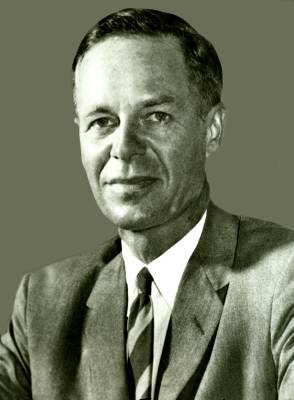
Charles Woodruff Yost was a career U.S. Ambassador who was assigned as his country's representative to the United Nations from 1969 to 1971.
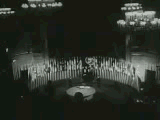
The history of the United Nations as an international organization has its origins in World War II beginning with the Declaration of St James's Palace. Taking up the Wilsonian mantle in 1944-1945, US President Franklin D. Roosevelt pushed as his highest postwar priority the establishment of the United Nations to replace the defunct League of Nations. Roosevelt planned that it would be controlled by the United States, Soviet Union, United Kingdom and China. He expected this Big Four would resolve all major world problems at the powerful Security Council. However the UN was largely paralyzed by the veto of the Soviet Union when dealing with Cold War issues from 1947 to 1989. Since then its aims and activities have expanded to make it the archetypal international body in the early 21st century.
The Military Staff Committee (MSC) is the United Nations Security Council subsidiary body whose role, as defined by the United Nations Charter, is to plan UN military operations and assist in the regulation of armaments. Although the Military Staff Committee continues to exist, negotiation efforts between the United States, the Soviet Union and other nations in the late 1940s failed, and the committee has since been largely defunct, only serving in an advisory capacity.

The United Nations Security Council veto power is the power of the five permanent members of the UN Security Council to veto any "substantive" resolution. They also happen to be the nuclear-weapon states (NWS) under the terms of the Treaty on the Non-Proliferation of Nuclear Weapons. However, a permanent member's abstention or absence does not prevent a draft resolution from being adopted. This veto power does not apply to "procedural" votes, as determined by the permanent members themselves. A permanent member can also block the selection of a Secretary-General, although a formal veto is unnecessary since the vote is taken behind closed doors.
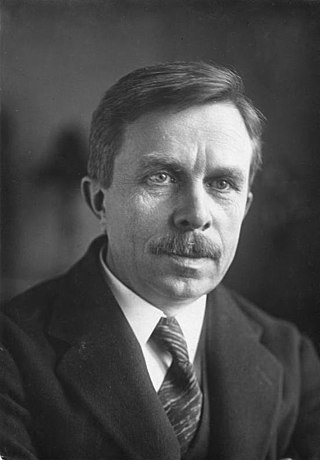
James Thomson Shotwell was a Canadian-born American history professor. He played an instrumental role in the creation of the International Labour Organization (ILO) in 1919, as well as for his influence in promoting inclusion of a declaration of human rights in the UN Charter.
Green Haywood Hackworth was an American jurist who served as the first U.S. judge on the International Court of Justice, as President of the International Court of Justice, as the longest running Legal Adviser to the US Department of State and as a member of Secretary of State Cordell Hull's inner circle of advisers. Hackworth was instrumental in the development of plans for the post World War II world order and was a key member of the U.S. delegation to the Dumbarton Oaks Conference (1944). He served as a member of the Advisory Committee on Postwar Foreign Policy (1942), as a member of Post War Programs Committee (1944) and as Chairman of the Committee of Jurists that drafted the initial statutes for the International Court of Justice (1945). Hackworth also represented the U.S. Delegation on Committee IV at the United Nations Conference on International Organization where the articles in the United Nations Charter pertaining to the International Court of Justice were finalized.

The United Kingdom is a founding member of the United Nations and one of five permanent members of the UN Security Council.

France has been a member of the United Nations (UN) since its foundation in 1945 and is one of the five countries, alongside China, Russia, the United Kingdom, and the United States, that holds a permanent seat on the United Nations Security Council (UNSC), which is responsible for maintaining international peace and security.
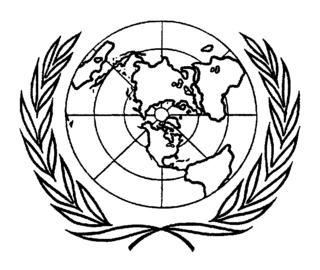
The United Nations Conference on International Organization (UNCIO), commonly known as the San Francisco Conference, was a convention of delegates from 50 Allied nations that took place from 25 April 1945 to 26 June 1945 in San Francisco, California, United States. At this convention, the delegates reviewed and rewrote the Dumbarton Oaks agreements of the previous year. The convention resulted in the creation of the United Nations Charter, which was opened for signature on 26 June, the last day of the conference. The conference was held at various locations, primarily the War Memorial Opera House, with the Charter being signed on 26 June at the Herbst Theatre in the Veterans Building, part of the Civic Center. A square adjacent to the Civic Center, called "UN Plaza", commemorates the conference.

The "Four Policemen" was a postwar council with the Big Four that US President Franklin Roosevelt proposed as a guarantor of world peace. Their members were called the Four Powers during World War II and were the four major Allies of World War II: the United Kingdom, the United States, the Soviet Union, and China. Roosevelt repeatedly used the term "Four Policemen" starting in 1942.
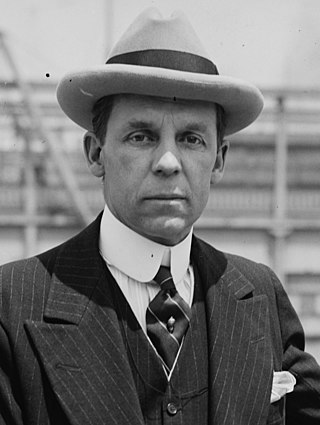
Robert Woods Bliss was an American diplomat, art collector, philanthropist, and one of the co-founders of the Dumbarton Oaks Research Library and Collection in Washington, D.C.

Leo Pasvolsky was a journalist, economist, state department official and special assistant to Secretary of State Cordell Hull. He was one of the United States government's main planners for the post World War II world and "probably the foremost author of the UN Charter." Thomas Connally said in his memoirs "Certainly he had more to do with writing the framework of the charter than anyone else." His New York Times obituary is subtitled "Wrote Charter of World Organization." A short, rotund, mustachioed pipe smoker with a very large and round head, he joked that he might find it easier to roll than to walk. An aide compared him to the third little pig in the Three Little Pigs, Hull called him "Friar Tuck". A hardworking "one-man think tank" for Hull, he preferred to stay invisible, in the background. In the words of Richard Holbrooke, he "was one of those figures peculiar to Washington – a tenacious bureaucrat who, fixed on a single goal, left behind a huge legacy while virtually disappearing from history."

The permanent members of the United Nations Security Council are the five sovereign states to whom the UN Charter of 1945 grants a permanent seat on the UN Security Council: China, France, Russia, the United Kingdom, and the United States.

The term Big Four Conference may refer to one of several conferences between heads of state or foreign ministers of the victorious nations after World War I (1914–18) or during and after World War II (1939–45).


















